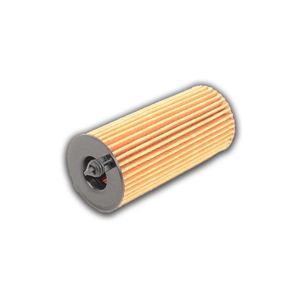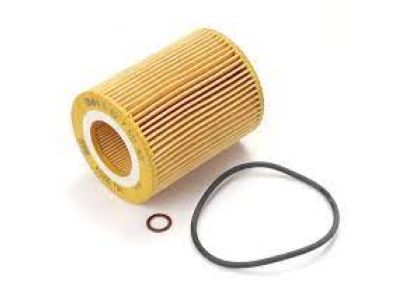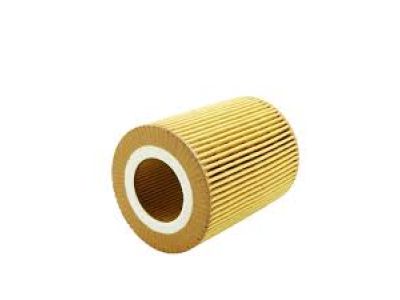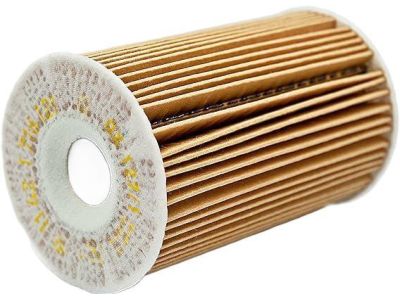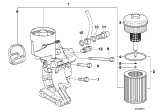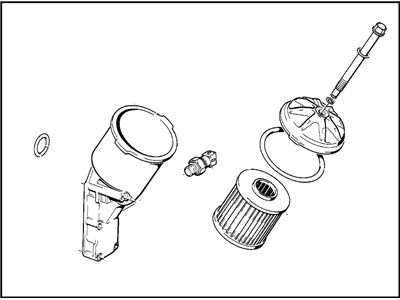×
- Hello
- Login or Register
- Quick Links
- Live Chat
- Track Order
- Parts Availability
- RMA
- Help Center
- Contact Us
- Shop for
- BMW Parts
- BMW Accessories

My Garage
My Account
Cart
Genuine BMW Z3 Oil Filter
Engine Oil filter- Select Vehicle by Model
- Select Vehicle by VIN
Select Vehicle by Model
orSeries
Model
Year
Select Vehicle by VIN
For the most accurate results, select vehicle by your VIN (Vehicle Identification Number).
5 Oil Filters found

BMW Z3 Oil Filter
Part Number: 11427512300$19.89 MSRP: $27.68You Save: $7.79 (29%)Ships in 1-3 Business Days
BMW Z3 Oil Filter Element Set
Part Number: 11421716192$19.89 MSRP: $27.68You Save: $7.79 (29%)Ships in 1-3 Business Days
BMW Z3 Support With Oil Filter
Part Number: 11421713838$250.50 MSRP: $320.10You Save: $69.60 (22%)Ships in 1-2 Business DaysBMW Z3 Support With Oil Filter
Part Number: 11421740001$237.87 MSRP: $345.19You Save: $107.32 (32%)Ships in 1-3 Business DaysBMW Z3 Oil Filter With Plastic Cover
Part Number: 11421715878$218.53 MSRP: $314.42You Save: $95.89 (31%)Ships in 1-3 Business Days
BMW Z3 Oil Filter
If you are looking for OEM BMW Z3 Oil Filter, we highly recommend to shop with us. Not only do we offer budget friendly prices, but we also provide fast delivery. In addition, we have a hassle-free return policy on all genuine BMW Z3 Oil Filter that come backed by the manufacturer's warranty.
BMW Z3 Oil Filter Parts Questions & Experts Answers
- Q: What are the safety precautions, oil specifications, fuel recommendations, and procedures for engine oil and filter changes on BMW Z3?A:It is very important to note that there are various skin diseases, including cancers that can develop as a result of prolonged exposure to used engine oils thus making it necessary to limit contact while changing the oil in your car by wearing gloves and wash hands and other exposed body parts with water and soap immediately after use. Waste fluids such as transmission fluid, brake fluid, antifreeze, and engine oil are considered harmful wastes. Consult your local authority or recycling program for correct disposal methods and avoid mixing these liquids. BMW recommends using a mineral or synthetic-based engine oils which meet or exceed API SG or European CCMC G4 classifications. Special oils like Mobil 1 SAE 5W-30 and Valvoline High Performance SAE 5W-30 have been approved for use in some BMW models. During break-in use single-grade mineral-based oil, then switch to multi-weight synthetic at first scheduled engine oil change; however, do not exceed recommended interval before subsequent changes. For example, lower numbers indicate lighter oil critical for cold start lubrication (SAE grade number). This feature makes multi-viscosity oils suitable for all temperature conditions (Multi-viscosity oils offer adaptability to temperature extremes). Engine manufacturers recommend that customers select motor oils with an API designation like SF or SG but avoid using additives because modern oils already include them in their composition. The octane rating corresponds to the fuel's tendency to burn on ignition rather than detonate during combustion; higher ratings give more protection against knocking or pinging effects. Fuel quality adaptation is possible with BMW engine management systems, although the suggested octane level varies: DOHC engines installed in three series should be filled with petrol not less than 90% while M3 requires at least 91%. The most accurate method of checking the right level of oil consists of allowing several minutes after stopping the engine to elapse before measuring on a horizontal road surface so as to enable the remaining oil to return into the crankcase. The level of the oil can be determined through checking by use of the dipstick and it should fall between the two marks. However, a spin-on cartridge type has a completely different process for proper disposal compared to a full flow element type. Always replace the oil drain plug crush washer when changing filter using BMW approved filter only. For instance, if it is spin-on cartridge type then one must lose its drain plug pressing inside so that there may not be any leakage of oil, use strap wrench while removing the filter, lubricate new gasket of the filter with some engine oil and follow manufacturer instructions on how to install it back. Draining all old oil and filling with fresh one as well as examining for leakage should be done before finally checking whether there is enough oil in your automobile or not. While Full flow element type recommends that you loosen an oil-filter-housing bolt, remove its cover, throw away old filters properly, replace 0-ring seals and put on coats of fresh oils on gaskets within them; also tighten cover bolts. After which you have to fill in some new contents thereon, replace it then apply more layers of lube onto gaskets before crossing cover bolt's limit at specified region; finally check again whether enough supply is assured without any signs of leakage from this entire process. Safe disposal procedures complemented by safety precautions as well as precise specifications are important in maintaining an efficient fuel system and engine lubrication practices.

